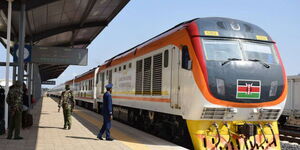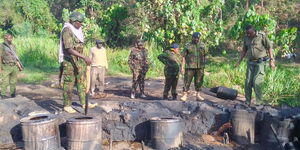For the longest time, transport on the Lake Victoria waters was mainly through wooden canoes which were prone to overturning due to the unpredictable waters of the vast inland lake.
The fatalities on the lake were estimated at 5,000 a year by the National Lake Rescue Institute, an NGO, attributed to several major accidents and tragic incidents on the lake.
In 2010, the water buses came into play with the first vehicles taking on the lake waters offering residents an affordable, fast and safe means of travelling from the mainland to the various islands.
The company founded by Dutch nationals Malcolm Ormiston and Friedrich Neser, the company has employed local talent to make the waterbuses.
Residents get to use the buses at affordable rates on various routes such as Luanda Kotieno - Mbita, Mfangano- Mbita and Mfangano West - Remba.
The boats are made in a shipyard referred to as Globology based in Kisumu by a team of local employees in partnership with global experts from Dykstra Naval architects.
The catamaran ferries are designed and constructed on the shores of Lake Victoria.
The basic structure draws inspiration from the local wooden canoes. The long and slender hulls keep fuel consumption down which in turn keeps ticket prices low.
In addition, the environmentally friendly engine design leads to a significant reduction in carbon emissions and preserves air quality for passengers.
The company plans to expand their services beyond Lake Victoria and towards the Indian Ocean, specifically in Lamu and Mombasa.
The company is accelerating its operations, scaling from four to eight ferries in 2020, with the ambition to have 16 ferries and transport 2 million passengers annually by 2022.
Also in the works are plans to target Uganda, Tanzania and several countries in West Africa as well as South East Asia.
With the upcoming Madaraka Day, Kisumu Governor Anyang' Nyong'o offered free water bus rides to residents from 10 a.m. to 4 p.m.












